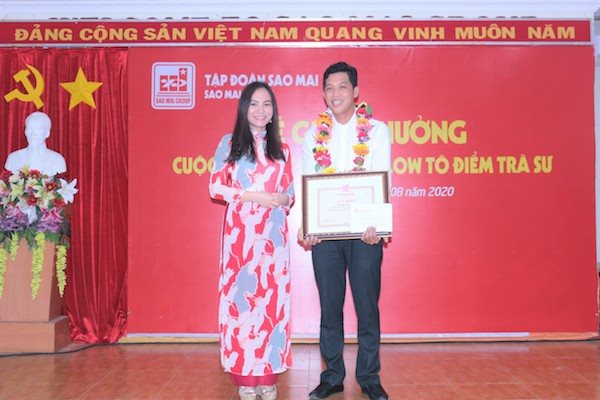Sao Mai Group has presented nearly VND200 million in total to architects who have won the first, second, third and consolation prizes in its Bungalow design contest. The bungalow will be one of tourism facilities that help embellish Tra Su cajuput forest.
With the aim of conveying its “mission and the future”, Sao Mai Group has kicked off the contest amid the Covid-19 outbreak so that architects could maximize their creativity during the social distancing period. After the pandemic, outstanding ideas of architects participating in the contest could be put into practice in Tra Su cajuput forest.
Designs must feature new and breakthrough ideas, ensure the harmony with Tra Su cajuput forest and require the minimum construction area. In addition, building materials must be friendly to the environment, and the internal space must be airy and include modern amenities. These strict requirements have encouraged architects to be creative and determined to include innovative ideas in their designs.
The contest has attracted a large number of contestants. After preliminary rounds, 10 best designs have been chosen for the final round. The jury has later based on stringent criteria to choose some preeminent and feasible designs that will serve ecotourism site development plans of Sao Mai Group.
The first prize worth VND50 million has been awarded to architect Nguyen Trong Nghia, the author of “Bungalow Thuy Moc”. The design features Vietnam’s longest bamboo bridge in Tra Su cajuput forest and ancient cajuput trees.

Architect Nguyen Phuoc Lap has won the second prize worth VND40 million for his “Net san Kho-me” (Khmer stilt house), which takes inspiration from stilt houses of Khmer ethnic people.
The third prize, valued at VND30 million, has been presented to Huynh Ngoc Ha, the author of “Ben que”, which reminds dinghies on canals in Tra Su cajuput forest.

This contest has been modelled after another contest that the group had earlier held to select highly-qualified architects who have breakthrough and creative thinking.

In the coming periods, Sao Mai will continue organizing other contests to develop its restaurants, hotels, convention centers and shophouses as well as tourism service facilities. The group currently has more than 10,000 employees, including over 600 employees with university degrees. Architects of the group are from across the country.

The prizes prove Sao Mai Group’s determination to develop tourism into its key revenue earner. The firm expects to have more famous tourist sites to serve tourists
Moreover, the contest has facilitated architects to improve their creativity and nurture their passions, helping Sao Mai carry out its missions and foray into the consulting, design and execution of high-end resorts.









